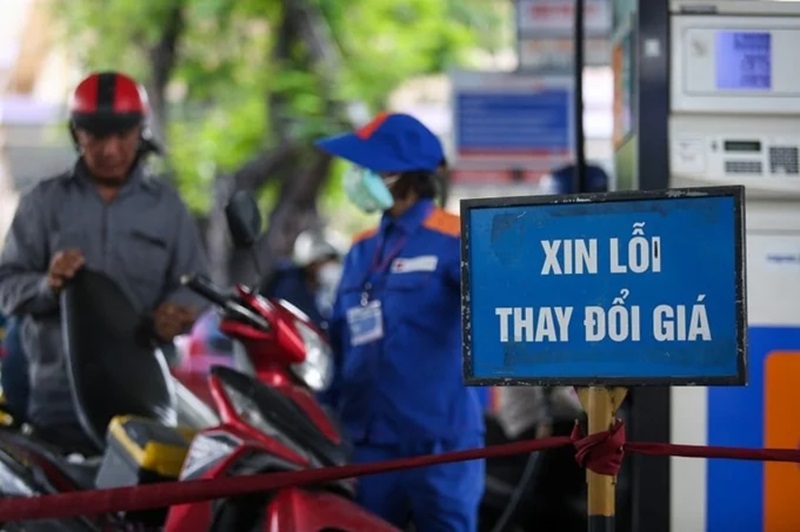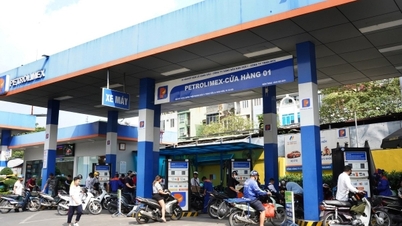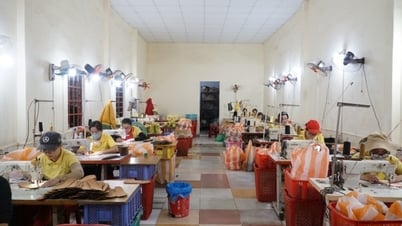The Ministry of Industry and Trade proposed that the balance of the Petroleum Price Stabilization Fund will not be left at the main petroleum trading enterprises as it is now, but will be held by the State, and the use of this Fund will be in accordance with the provisions of the 2023 Law on Prices.
 |
| In the latest draft of petroleum business, the Ministry of Industry and Trade proposed not to put the Petroleum Stabilization Fund at the main enterprises but to let the State hold it. |
The third draft of the Decree on petroleum business sent by the Ministry of Industry and Trade to the Ministry of Justice for review has new points. Accordingly, the Ministry does not provide regulations on the management of the Petroleum Price Stabilization Fund as in previous drafts.
In the draft, the balance of the Petroleum Price Stabilization Fund is expected to not be kept at the petroleum trading enterprises as it is now, but will be held by the State. The use of the Fund is in accordance with the provisions of the 2023 Price Law (effective from July 1).
The Ministry of Finance will guide businesses to transfer and pay the balance of the Petroleum Stabilization Fund to the budget, according to the draft decree.
According to a representative of the Domestic Market Department (Ministry of Industry and Trade), the 2023 Price Law stipulates five price stabilization measures, of which the fifth measure is to use the Price Stabilization Fund for goods for which the Fund has been established.
Ministries and branches develop price stabilization plans and send them to the Ministry of Finance for synthesis and submission to the Government for approval in principle. After the policy is approved, ministries and branches will organize implementation. The use of the Price Stabilization Fund is implemented in accordance with the 2023 Price Law. Stabilization measures are time-limited.
Thus, in case the price of petroleum products fluctuates abnormally, causing a major impact on the socio-economy, production, business and people's lives, the Ministry of Industry and Trade shall preside over and coordinate with relevant ministries and branches to assess the level of fluctuations in the market price of petroleum products, the level of impact on the economy, production and business; and send a document to the Ministry of Finance to synthesize and submit to the Government for consideration and decision on the price stabilization policy.
“The new point is that the Stabilization Fund will not be used regularly. When gasoline prices fluctuate abnormally, the Ministry of Industry and Trade will take the lead in coordinating with other ministries and branches to develop stabilization measures and send them to the Ministry of Finance for synthesis and submission to the Government for consideration and decision on implementation policies,” said a representative of the Domestic Market Department.
Recently, the use of the Petroleum Price Stabilization Fund has caused much controversy. Many opinions say that it is time to abolish this Fund because it is ineffective. At times, the Fund's lack of transparency has created loopholes for some businesses to misappropriate capital, creating many negative aspects in financial management, causing market instability.
The conclusion of the Government Inspectorate announced at the end of 2023 showed that 7 petroleum sources misused the Price Stabilization Fund, did not transfer money to the fund account but left it in the enterprise's payment account, the amount of nearly 8,000 billion VND.
The Price Stabilization Fund has been continuously appropriated and misused by key traders for the purpose of stabilizing gasoline prices,” the Government Inspectorate emphasized.
Contributing to the development of a new decree on petroleum trading recently, large enterprises such as Petrolimex, PV Oil... all said that, in the current context, maintaining the Petroleum Price Stabilization Fund is no longer appropriate, because implementing the price management cycle of 7 days/time, domestic petroleum prices have closely followed world prices, the level of price fluctuation between basic price adjustments is no longer large.
Source: https://baodautu.vn/de-xuat-ve-quy-binh-on-gia-xang-dau-co-gi-moi-d219913.html


![[Photo] Prime Minister Pham Minh Chinh chairs meeting on science and technology development](https://vphoto.vietnam.vn/thumb/1200x675/vietnam/resource/IMAGE/2025/5/17/ae80dd74c384439789b12013c738a045)



![[Photo] More than 17,000 candidates participate in the 2025 SPT Competency Assessment Test of Hanoi National University of Education](https://vphoto.vietnam.vn/thumb/1200x675/vietnam/resource/IMAGE/2025/5/17/e538d9a1636c407cbb211b314e6303fd)
![[Photo] Readers line up to visit the photo exhibition and receive a special publication commemorating the 135th birthday of President Ho Chi Minh at Nhan Dan Newspaper](https://vphoto.vietnam.vn/thumb/1200x675/vietnam/resource/IMAGE/2025/5/17/85b3197fc6bd43e6a9ee4db15101005b)























![[Photo] Nearly 3,000 students moved by stories about soldiers](https://vphoto.vietnam.vn/thumb/1200x675/vietnam/resource/IMAGE/2025/5/17/21da57c8241e42438b423eaa37215e0e)







































































Comment (0)